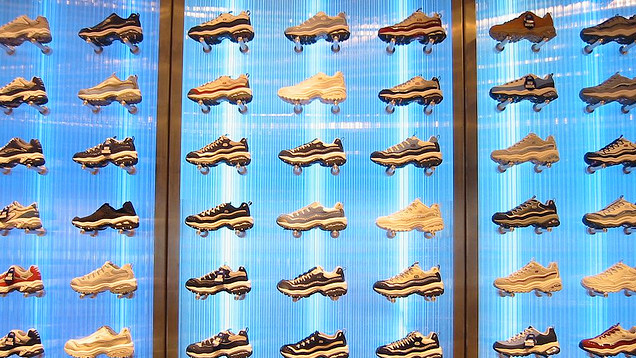It’s probably best to pick running shoes based on comfort rather than the old theory of evaluating your gait and correcting for pronation. But a lot of runners, especially beginners, might misunderstand what’s meant by “comfort”.
Picture: Martin Howard
A new study in the British Journal of Sports Medicine confirms the “comfort filter” as one of the best tools a runner has for choosing shoes:
Based on the lack of conclusive evidence for [foot strike and pronation], which were once thought to be the prime predictors of running injuries, two new paradigms are suggested to elucidate the association between footwear and injury. These two paradigms, ‘the preferred movement path’ and ‘the comfort filter’, suggest that a runner intuitively selects a comfortable product using their own comfort filter that allows them to remain in the preferred movement path.
Here’s the problem with talking about “comfort”: It doesn’t mean choosing the cushiest shoe, or the one that feels perfect when you put it on in the store. Rather, you want a shoe that keeps you comfortable throughout your run.
Runner’s World talked to some experts about what “comfort” means. Geoff Grey, president of a shoe research lab, points out that this is easy advice to follow if you’re experienced: you know how you like your feet to move, and you can tell what shoes work with your body rather than against it. But he and other experts cautioned that many runners judge comfort as whatever they’re used to or what shoe feels the cushiest.
Researchers Benno and Sandro Nigg explain what you should really be looking for:
Unlike the way we use the word in daily conversation, Nigg’s “comfort” represents more than fit, softness, or cushioning. … Your body wants to move in a certain pattern unique to your bones and joints, and will naturally follow this path. This is why you can pick out your running buddy from an approaching crowd of runners a half mile a way.
While different shoes won’t affect this pattern much, Sandro Nigg explains, some will require you to use more muscles to achieve your preferred stride pattern. In effect, you are fighting the shoe in order to run the way your body prefers. The best shoes for you will let you run as you are built to run with the least muscular effort.
Unfortunately there’s no easy test (yet) for whether a shoe is the perfect one for you, but taking it for a test run (as most running stores will allow) is a good start. Read more at the link below for some tips on how to boost your chances of finding a comfortable shoe.
Choosing Shoes: Should Comfort Be Your Only Guide? [Runner’s World]

Comments
One response to “‘Comfort’ In Running Shoes May Not Mean What You Think It Means”
Well, never go to the Athletes foot and get a pair fitted by fitzi… i got a pair that were a size and a half too small for my feet, after a fortnight of persistent blisters, I got my money back and went and bought a pair that i fitted myself and lo and behold no blisters and a perfect fit.
Long story short, fitzi and the Athletes foot can go jump in a lake.
Wow, you’re right! Your one experience can totally be extrapolated across all stores and salespeople for the company in Australia. And the world!
Or maybe you just got a crap salesperson. I worked at AF for a couple of years in the 90s. Fitzi (called Fitprint, when I worked there) is a marketing aid, not a diagnostic tool. And if a salesperson can’t tell that the shoes they’ve put on someone are that much too small they’re either incompetent or apathetic, and no automagic walking computer thingy will help them or you. Try to avoid tarring everyone with the same brush.
I’m glad you got some better shoes and that running is now comfortable. What did you get? I’ve ended up in underarmour apollos with very little rise under the heels, and have found forefoot running to make an enormous in how comfortable I find it.